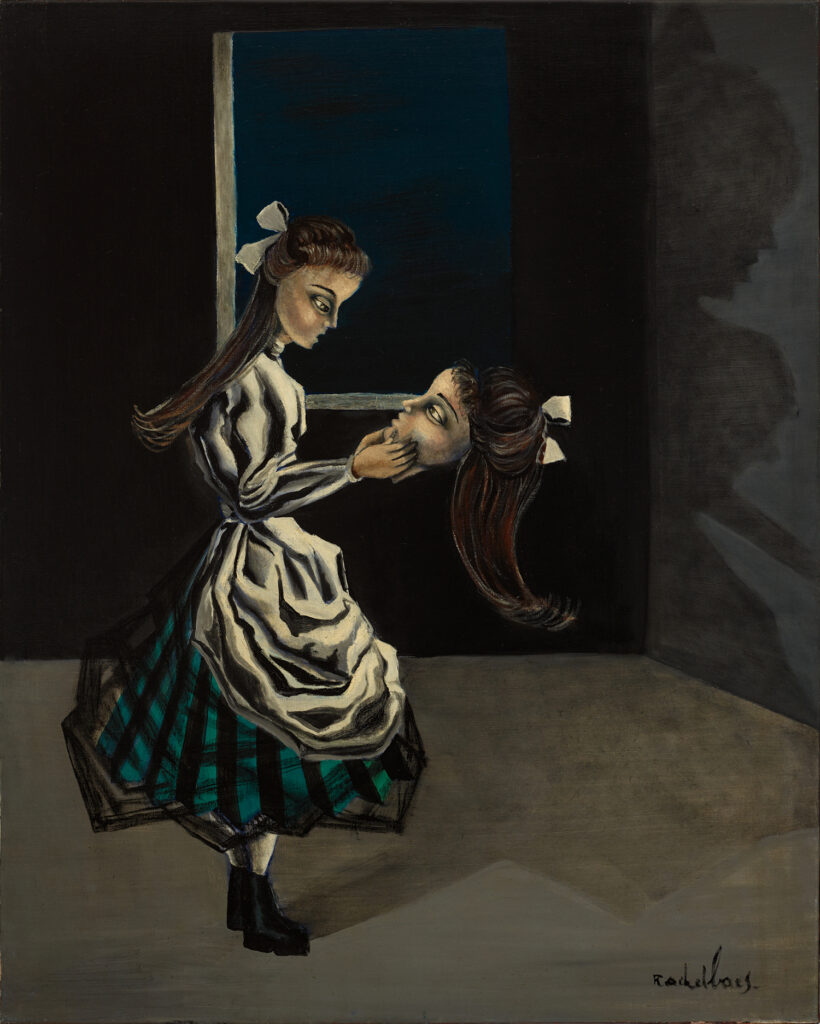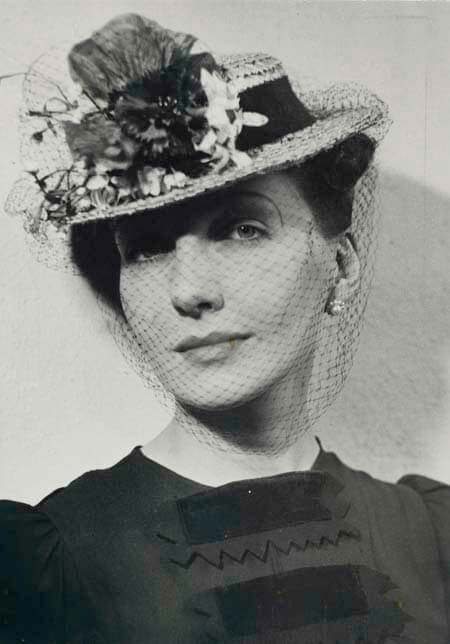Your currently viewing RAW Modern | Switch to RAW Contemporary
L'entretien Rétrospective, 1950
Catalogue essay by Blanche Llewellyn
“I am not a Surrealist painter, I am a Surrealist that paints” Rachel Baes wrote in her diary. This did not, however, prevent Baes from frequenting both the Surrealist circle in Brussels and the members of the French group. In 1945 she met Paul Éluard and his wife, Nusch, whose portrait she painted. The following year Éluard published a poem in which he described Baes: “As a lonely woman / Who draws instead of talking / In the desert / And so as to see before her […]”.
During that period, Baes associated with numerous artists and writers on the Parisian scene, among them Georges Bataille, Jean Cocteau, Marcel Lecomte, E. L. T. Mesens, and Magritte (she performed the role of muse in some of Magritte’s amateur films.)
Convinced of the merit of her work, Wifredo Lam even introduced her to Breton in 1952. Under his guidance, she exhibited the following year at the “A l’Étoile scellée” gallery in Paris.
In 1940, her lover, Joris van Severen, founder in 1931 of the far-right Verdinaso (a Fascist political movement in Belgium) who, sus-pected of collaboration, was shot by the French military.
Following this tragedy, Rachel Baes abandoned the flower and landscape pictures that had earned her acclaim among her middle-class patrons. She now immersed herself in the dreamlike and sombre world of surrealism, channeling the pain she had endured: “The one and only freedom lies in dreams” she concluded at the time. Baes’ work became predominantly inhabited by female figures, and often young girls. Strange, mysterious little things, dressed like dolls, are depicted in airless rooms with an angst-ridden atmosphere and seem to subvert Breton’s cherished image of the child-woman, whose purity, and candidness he thought would facilitate access to the subconscious. Her girls do not possess the erotic qualities these artists invested in. Juggling with ambiguity, as if heralding the terrible events of the artist’s own life, these little girls appear prey to invisible demonic forces and are condemned to a tragic fate.
“L’entretien Retrospective”serves as a metaphor of her pain– the title suggesting a feeling of heavy nostalgia – a reminiscence of the past. (“L’entretien”/ “an interview”) implies a discussion between the young girl and herself – most likely between her dissociative identity, represented by the severed double head, a disturbing image and scene that acts as a reflection of a dystopian vision, emphasizing the perturbing ambience and the artist’s inner turmoil.

